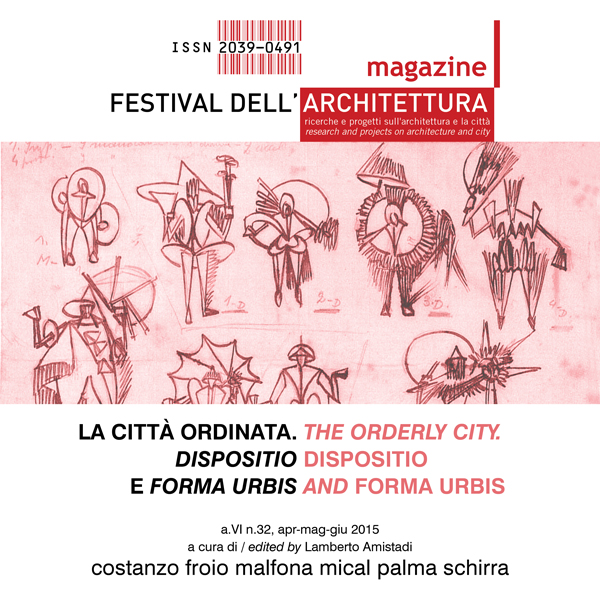Abstract
The essays in this issue, number 32 of FAmagazine (section Theory of the intenational call for paper 2015), concerning the Vitruvian concept of dispositio in relation to the form of the city and a settlement strategy, cannot avoid straddling the long wave that oscillates between abstraction and figuration and the even longer one between the formal and the informal. Le Corbusier himself recognized a “profound” and abstract structural value for the plan, defining it as “austere abstraction” and “an arid algebrization” (4). Assuming as opposing and extreme terms of this tension “striated” space (Palma) and “smooth” space (Mical), we cannot avoid wondering, taking the various terminologies with a pinch of salt, that a “weak” discipline like ours envisages, at the cultural distance of our interlocutors, whether the “field of possibilities” that the instrumental nature of the dispositio concept deploys possesses some latent value. In other words, whether it is conceivable to define these possibilities of a relationship between the elements of an urban context, independently of their manifestation and hence independently of the nature of space, be it smooth or striated, whose contrast does not so much concern the nature of the relationships as their stability over time: anthropologically “inscribed” rather than “soft” and reversible. But perhaps the basic difference between these models concerns the capacity of a site's morphology (which Canella once defined as “invariant”) or, more generally, of a pre-existing formal structure, to set a limit on the number of possibilities available to a combinatoric formula. This finite number of possibilities is truly a settling point within this topological perspective.


